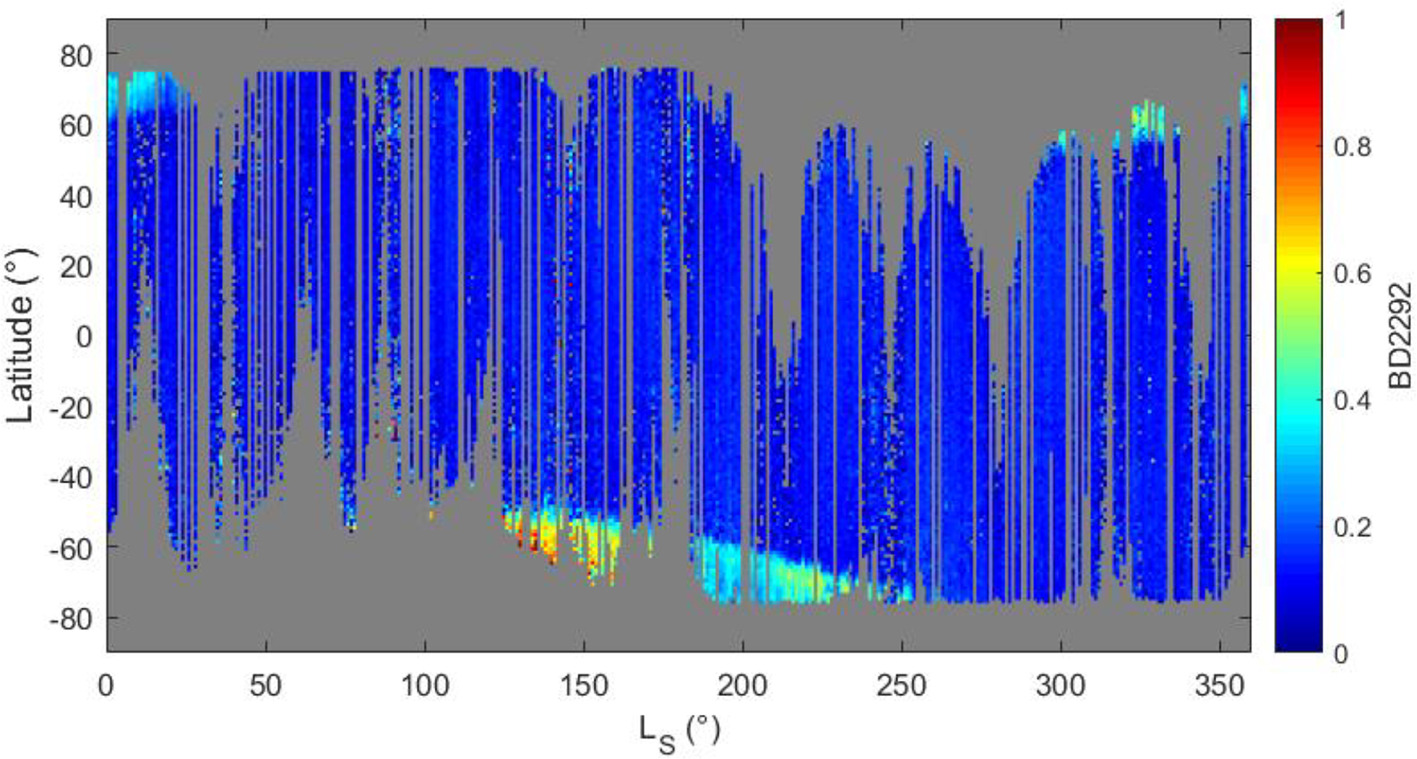Icarus (2023) https://doi.org/10.1016/j.icarus.2023.115698
L. Ruiz Lozano, F. Oliva, Ö. Karatekin, G. Bellucci, V. Dehant, E. D'Aversa, F.G. Carrozzo, F. Schmidt, G. Cruz Mermy, I.R. Thomas, A.C. Vandaele, F. Daerden, B. Ristic, M.R. Patel, J.-J. López-Moreno
Mainly designed to study minor atmospheric species in the Martian atmosphere, the Nadir and Occultation for MArs Discovery (NOMAD) instrument suite onboard the 2016 ExoMars Trace Gas Orbiter (TGO) can also be exploited for surface ice detection. In this work, we investigate the nadir observations of the NOMAD infrared channel from the Martian Years 34 to 36 (Mars 2018 to December 2022), especially for CO2 ice detection. Based on Oliva et al. (2022), we present an updated method taking advantage of the 2.7 μm absorption band for surface ice detection by selecting the diffraction orders 190, 169, 168 and 167. We focus the analysis on the Southern polar cap and define its boundaries during its sublimation phase in MY34–36. Globally, seasonal changes seem repeatable for MY34–36. Moreover, we show the potential of the 2.29 μm absorption band for surface CO2 ice identification through the diffraction order 193. We define a pseudo-band depth as a good proxy for CO2 ice detection. Following a semi-qualitative approach, we attempt to reproduce such spectra by using the Planetary Spectrum Generator (PSG) model in order to estimate CO2 ice equivalent grain size. For the selected periods, the estimations are in the order of centimetres, which is in agreement with previous studies using spectral observations of OMEGA, CRISM and TES instruments.

Latitudinal-seasonal map of BD2292 binned 1° by 1°. LNO observations cover all MY35 and 36 for a SZA < 75°

